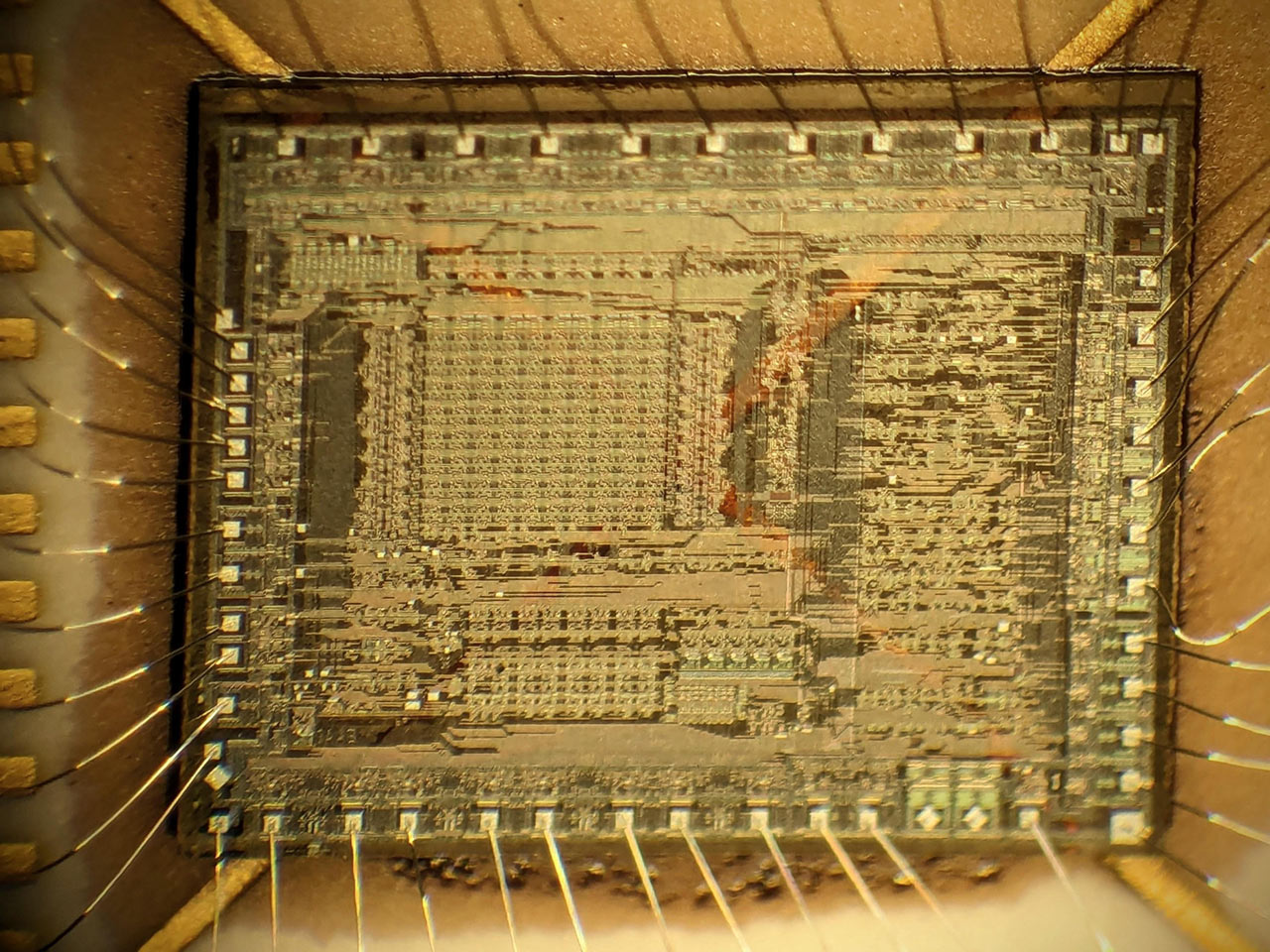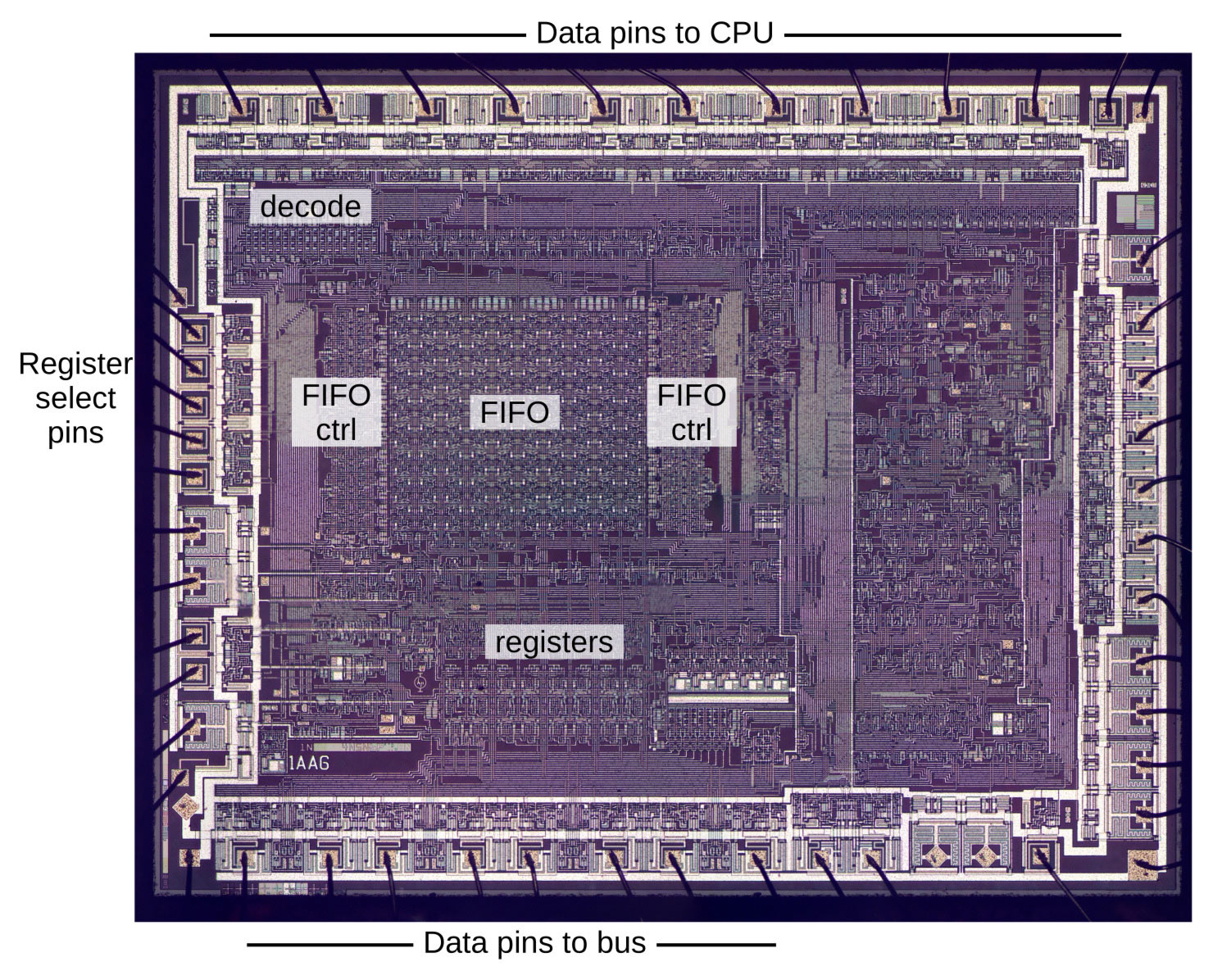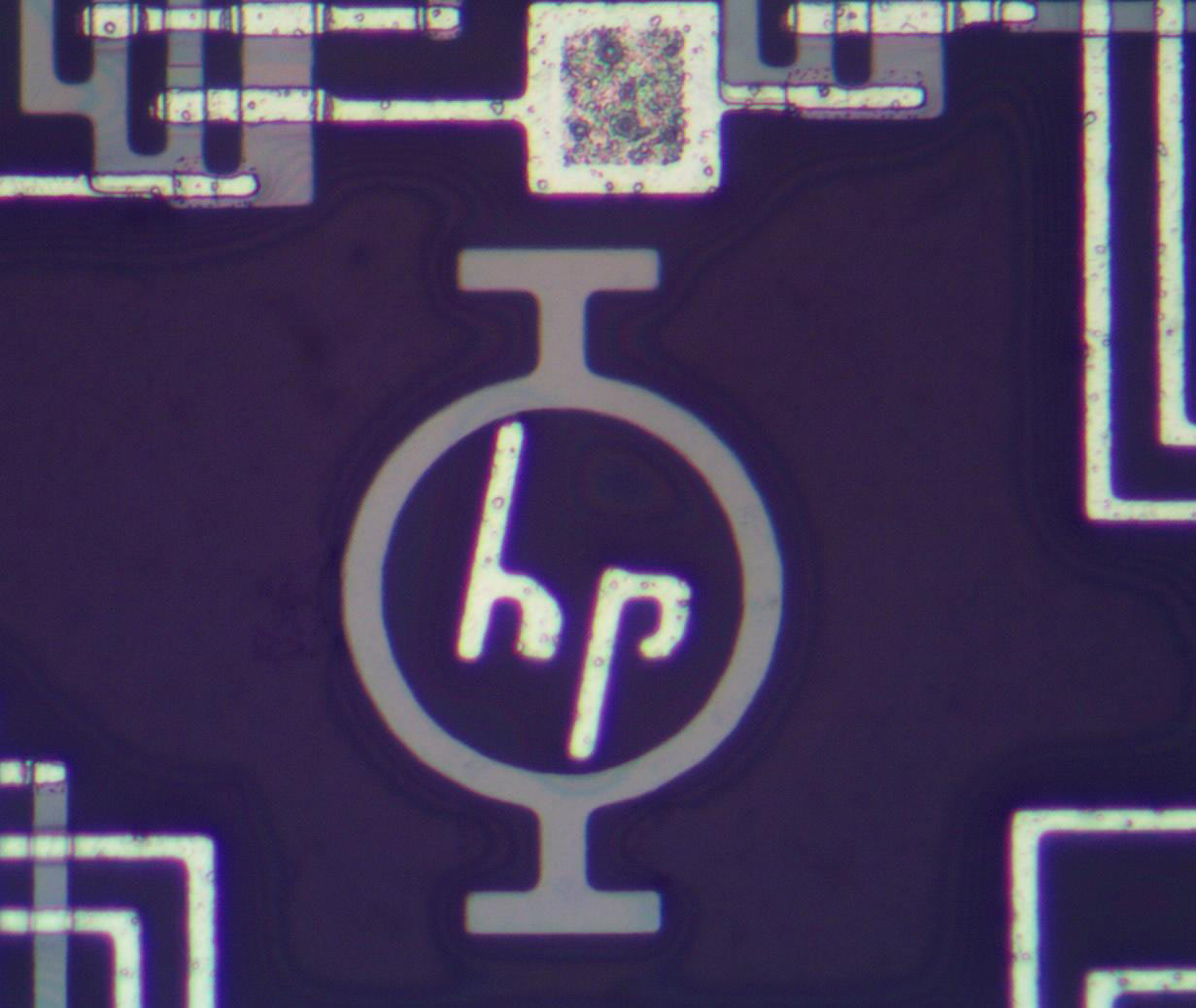Transparent processor found in vintage HP computer – exotic silicon-on-sapphire chip discovered on a humble floppy drive PCB

A mysterious transparent chip has been found in an HP computer, dating back to 1977. Investigations have concluded that the custom chip was formed on a sapphire substrate, making it a silicon-on-sapphire IC. What was it for? Its function was far more mundane than you might expect: It was a support component on a floppy disk controller.
Computer historian and IC reverse-engineering enthusiast Ken Shirriff uncovered this interesting chip by de-capping a broken interface chip in a vintage HP computer. But the interface wasn’t from some futuristic photonic supercomputer server experiment from the company; it was in a humble floppy drive controller PCB sitting between HP's interface bus (HP-IB) and a Z80 processor.
Shirriff explains that the silicon-on-sapphire IC was found beneath the cap of a chip called the PHI (Processor-to-HP-IB Interface) and was used in multiple HP products back in the day. “It handles the bus protocol and buffered data between the interface bus and a device's microprocessor,” according to historians' investigations.
Silicon-on-sapphire may sound somewhat futuristic, but Shirriff’s blog highlights that ICs made this way have been around since 1963 or earlier. A notable example of a silicon-on-sapphire IC is the RCA 1802 processor used on the Galileo space probe that studied Jupiter and its moons.



The IC reverse engineering enthusiast also detailed some of the peculiar features of silicon-on-sapphire, such as the sapphire substrate being an insulator, effectively isolating the various silicon regions upon it. Apparently, this type of construction “reduces the capacitance between transistors, improving performance.” Moreover, sapphire’s insulation properties can prevent stray currents and protect against low-impedance short circuits and the effects of radiation – hence its use in the aforementioned space electronics applications.
Shirriff’s blog goes into a deep dive with a look inside the HP PHI chip, its construction, and die. He even examines its logic gates, first-in-first-out buffers (FIFOs), and address decoder. Please check out the blog for all these finer details and more.
In conclusion, the computer historian echoes our initial thoughts that this silicon-on-sapphire IC is “interesting as an example of a ‘technology of the future’ that didn't quite pan out.”
Shirriff also contrasts late 70s era processors built on silicon-on-sapphire vs regular silicon in terms of energy consumption and clock speeds. Would you be surprised to hear that silicon-on-sapphire ICs were far superior using these metrics? Things might have panned out differently if these transparent ICs had been mass-produced at better yields and lower manufacturing costs. A frightening statistic highlighted by Shirriff is that HP’s silicon-on-sapphire yields were a mere 9%.
Get Tom's Hardware's best news and in-depth reviews, straight to your inbox.

Mark Tyson is a news editor at Tom's Hardware. He enjoys covering the full breadth of PC tech; from business and semiconductor design to products approaching the edge of reason.
-
Co BIY Replygg83 said:9% is probably where Huawei is at with their "5nm" chip.
Whether 9% is bad or good would depend entirely on costs and sales price. If your process and testing is cheap enough then it could be totally viable. -
brandonjclark Cool article... This is why I visit Toms. They just do a great job of centralizing a lot of the tech info I care about.Reply -
LunarTheSpaceCat probably industrial sapphire which is cheap as balls and even real gemstone would be cheap as balls because its so thin so small etcReply -
kjfatl The most expensive part in a high quality grocery score barcode scanner is the sapphire window on the weigh plate. The 'cheaper' windows use diamond impregnated glass.Reply
Like silicon, sapphire crystals are grown for use in industrial production. In the case of sapphire used in widows, a ribbon of material a few inches wide is pulled in a single step. -
gg83 Reply
Excellent point that I forget about percentages and stats. It all depends on other variables too.Co BIY said:Whether 9% is bad or good would depend entirely on costs and sales price. If your process and testing is cheap enough then it could be totally viable. -
Co BIY Replykjfatl said:The most expensive part in a high quality grocery score barcode scanner is the sapphire window on the weigh plate. The 'cheaper' windows use diamond impregnated glass.
Like silicon, sapphire crystals are grown for use in industrial production. In the case of sapphire used in widows, a ribbon of material a few inches wide is pulled in a single step.
Super interesting. Why do scanner windows need such exotic materials? I would have assumed quality glass would be sufficient. -
George³ Sapphire is something ordinary just Aluminium oxide. And not need so extreme environment to grow like artificial diamonds.Reply